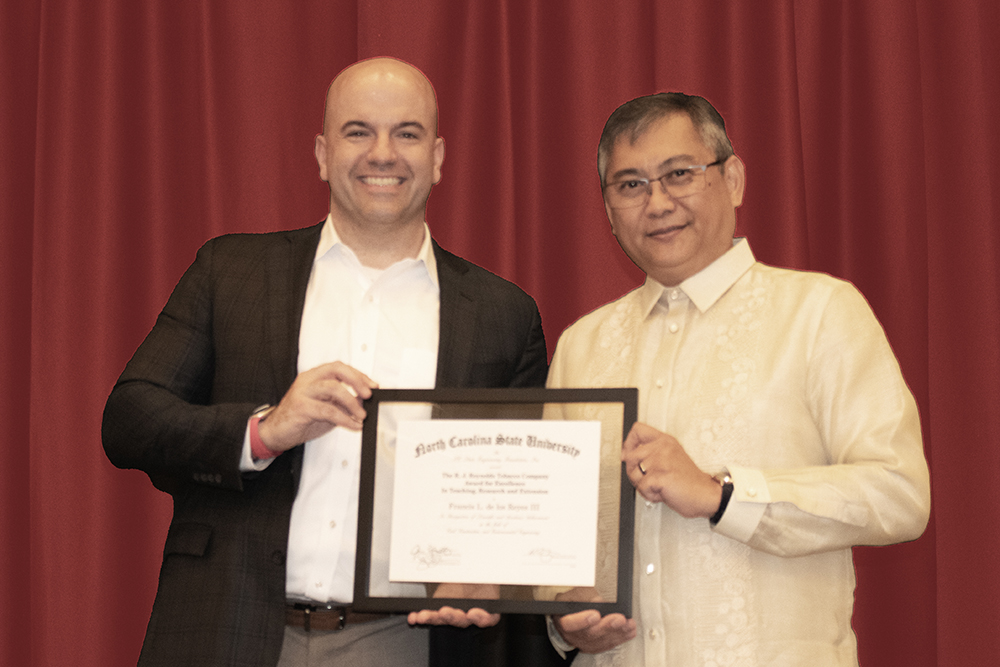CASL renewal will drive research across the College

Funding for the Consortium for the Advanced Simulation of Light Water Reactors (CASL), an Energy Innovation Hub that includes work by NC State’s Colleges of Engineering and Science, has been renewed by the U.S. Department of Energy for an additional five years and $121.5 million. The renewal will help further CASL’s research efforts to make nuclear power more economical and safer and to reduce the amount of radioactive waste produced.
CASL was established in 2010 to develop advanced modeling and simulation capabilities that serve as a virtual version of operational and future light water reactors. NC State is a founding partner of CASL, which is headquartered in the Oak Ridge National Laboratory. Other founding partners include: Westinghouse, the Electric Power Research Institute, Tennessee Valley Authority, MIT, the University of Michigan and the Idaho, Los Alamos and Sandia National Laboratories.
“What we thought we were going to do a year from now, we have expanded on and have researchers working on collaborations,” said Dr. Paul Turinsky, chief scientist of CASL and professor of nuclear engineering at NC State. “At NC State we have faculty and researchers working in varying technical disciplines, including applied mathematics, computer science, and materials, mechanical and nuclear engineering, in addition to education and business assessment components. It’s these collaborations that will help us reach the CASL goal of providing simulation capabilities to support showing how nuclear energy can be a dependable and affordable energy source in the U.S.”
Research across disciplines
CASL research to ensure the safest production of nuclear energy in the coming decades can be seen across several departments within the College of Engineering.
Predicting steam bubbly flows

Most operating nuclear reactors use water to both cool the reactor and transfer the heat from the nuclear fuel to use in electricity generation. Dr. Igor Bolotnov, assistant professor in the Department of Nuclear Engineering, is using high-performance computing to study bubbly turbulent flows in reactor geometries, which is important for the design of safe and efficient reactors.
According to Bolotnov, steam bubble distribution in coolant channels is important to predict since it greatly affects the heat transfer parameters. In nuclear reactor cores, the heat transfer occurs through the surface of a fuel rod to the flowing liquid around it. The presence of boiling water enhances the rate of heat removal from nuclear fuel rods. If too much steam is created and it concentrates near the fuel rod surface, it can lead to the phenomena known as departure from nucleate boiling (DNB). In nuclear reactors this process would occur at high temperatures (up to 315 °C / 600 °F) and is challenging to study experimentally.
“If this happens, the fuel rod becomes insulated by steam, and this may lead to the overheating of the fuel and serious safety issues,” said Bolotnov. “The accurate prediction of DNB is one of the challenge problems for CASL.”
With the help of detailed simulations, Bolotnov and a graduate student have contributed to the development of new engineering models to predict the bubble behavior on a large scale, such as a whole reactor code.
Defining CRUD
Dr. Donald Brenner, associate department head and Kobe Steel Distinguished Professor in the Department of Materials Science and Engineering, is focusing on theoretical and computational investigations of the chemistry within reactor coolants.
Brenner and postdoctoral scholar Zsolt Rák are working to define the thermodynamic driving force for the creation of oxide deposits on fuel rods. These deposits – Chalk River Unidentified Deposits, or CRUD (no, really) – are named after Canada’s Chalk River nuclear power plant where they were first observed. As CRUD formations lead to local fuel rod temperature increases and more deposits, there is a risk of localized corrosion-induced failures of the fuel rod cladding (tubing that contains the nuclear fuel and hence radioactive material).
In order to define those driving forces, Brenner is using quantum-mechanical methods to calculate the formation energies of various species that are known to form in CRUD, including nickel ferrite (a compound of iron, nickel and oxygen) and nickel oxide (a compound containing nickel and oxygen).
“Emphasis in CASL with respect to CRUD chemistry has shifted away from why CRUD forms to the question ‘Where do the ions in solution that form CRUD come from?’” said Brenner. “Because of this, we have shifted our emphasis to calculating the stability of the other materials, like stainless steel, that are also in contact with the coolant, to try to estimate the extent to which these materials may dissolve into the coolant.”
Modeling crystals

Dr. Mohammed Zikry, Zan Prevost Smith Professor in the Department of Mechanical and Aerospace Engineering, is modeling the high temperature behavior and failure of irradiated materials and systems found inside a reactor.
Zikry and his student researchers are developing computational finite-element models on the crystal (or grain level) and sub-crystal level – what is classified as the meso scale.
This modeling work involves physically representing the crystal and then relating this behavior to crack nucleation or failure in reactor structures and subcomponents. Because experiments related to these high temperature and irradiated conditions are difficult, if not impossible, to conduct, accurate modeling of fracture and failure are essential for fail-safe design of light-water reactors. Zikry’s research will lead to computational predictive tools that will further our understanding of how materials and systems fail.
“Our work is part of an integrated effort between universities, industries and national laboratories to provide accurate predictions of how material and systems behave under extreme loading conditions related to high temperature, irradiation, and fracture,” said Zikry.
Return to contents or download the Fall/Winter 2015 NC State Engineering magazine.
- Categories:


